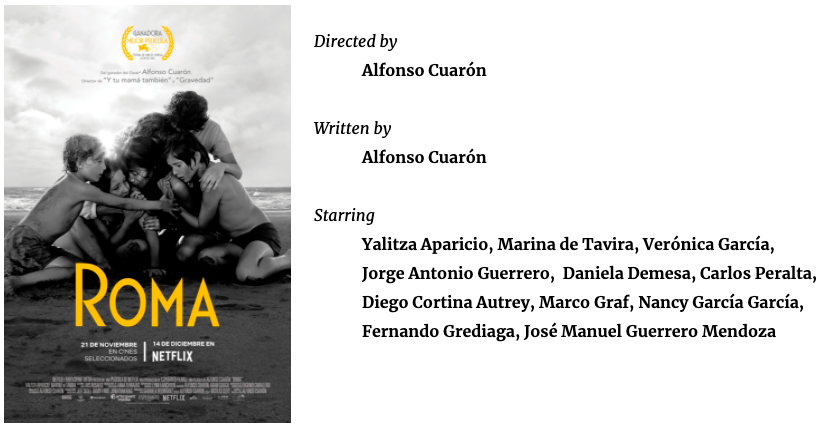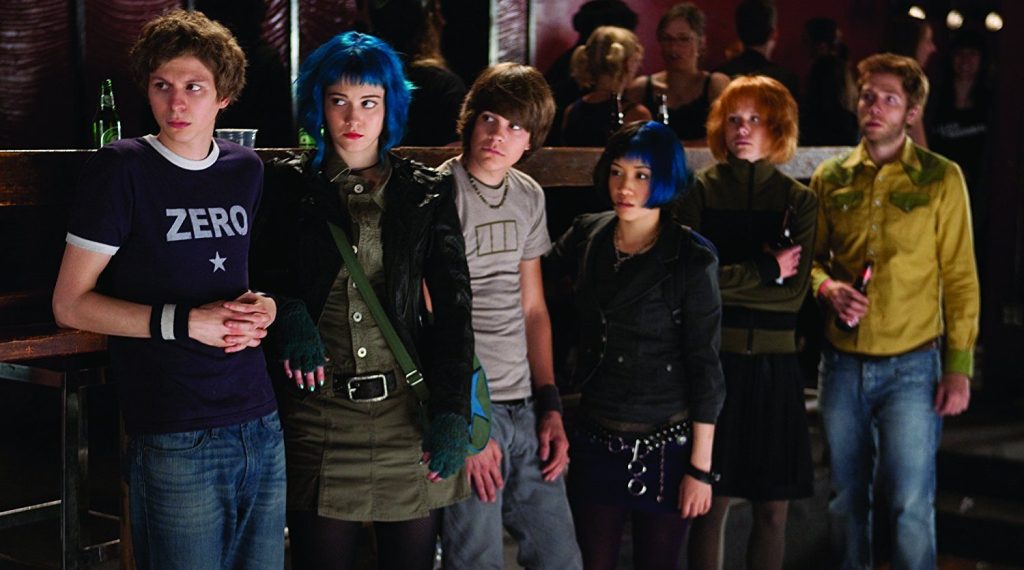
This was an interesting one, ReWatch-wise. It had always been there on my ‘movies deserving of an article’ master list, but on the basis of increasingly vague and distant memories. At the time of its release, I was ten years old and a wimp, particularly about movies, meaning I’ve still never experienced it on the big screen it was clearly meant for—but whenever I finally did see it was still a very long time ago. So when I sat down to re-watch it, I wasn’t at all sure if it would hold up as well as I hoped. Fortunately, though, my past judgment held up, albeit in some unexpected ways. Gladiator is as good as I remember, but mostly for reasons that I probably didn’t recognize—and certainly couldn’t have articulated, even to myself—at the time.
It’s kind of wild how neatly our recent history has lined up with the numerical system we devised to catalogue it, with the year 2000 being an inflection point for so many aspects of society. Or maybe that’s just confirmation bias; it’s easy to cherry-pick examples. In any case, the turn of the millennium was, among other things, a watershed moment in action cinema. I’m referring, of course, to the computer-generated imagery revolution, which has, as we’ve all seen, transformed the way filmmakers approach action, especially of the historical-epic variety. It wasn’t instantaneous, but in retrospect it was quite a rapid shift: just five years before Gladiator, Mel Gibson was shooting at real castles and hiring 1,600 extras for the battle scenes in Braveheart; just a few years after it, Peter Jackson’s Weta Digital was marshalling thousands-strong CGI armies in the Lord of the Rings trilogy, and movies like Sky Captain and the World of Tomorrow (2004) and Sin City (2005) were shooting entirely in front of green screens. And the rest is history, as just about any non-Christopher-Nolan blockbuster shows.
Released squarely in the year 2000, Gladiator exemplifies that shift not just numerically, but cinematically as well, making liberal use of both then-cutting-edge CGI and the kinds of practical effects—highly elaborate, often quite high-tech, and extravagantly expensive, to be sure, but still focused on real objects in real space—that had previously defined action cinema. Nowadays, when digital effects have fully come into their own, the movie plays as an interesting cinematic mélange, with visual elements that feel thoroughly contemporary and ones that register as throwbacks to an earlier era in equal measure.

So among the ways that Gladiator seeks to recreate its ancient setting, some are essentially familiar. The grand, sweeping CGI shots of Rome; the distant crowds of animated thousands filling it up; and the constructed sets with digitally added cityscape looming in the background; are not so different from the visuals used to immerse us in ancient and fantastical worlds today.
Much of the action, on the other hand, looks distinctly old-school, more like movie combat of the 1990s than the heavily digitized action of the past decade or so. I’m thinking, for example, of the way slow motion is used: regularly but selectively, and to exaggerate impacts rather than wounds or dismemberments, which were still achieved primarily with practical effects that wouldn’t benefit from slower, more detailed examination. Same for the frequent instances of that blurred, stuttery stop-motion effect that was commonly used to amplify the frenzy of battle in the pre-CGI era—achieved, here by cinematographer John Mathieson, via the camera tricks of low frame rates and tight shutter angles.[i] In the opening battle sequence, we also get a prime example of what I call the ‘many-shot’ technique, another common pre-digital way of portraying battlefield mayhem on a large scale, in which we see a many shots of real arrows (and, in this case, pots of flaming oil) raining down in quick succession, rather than a huge, digitally enhanced number of projectiles raining down in a single shot.[ii] Similarly, the movie still relies often on fundamentally old-school methods of editing, showing deaths, impacts, and other aspects of the action in a way that masks the limitations inherent in even extremely skillful stunt work. For example, CGI can now easily animate weapons and wounds convincingly enough to show the flight of an arrow all the way from the bow to its unfortunate recipient. In Gladiator, that wasn’t quite possible yet, so we still see the release and the impact in separate, often relatively close, shots.
That sounds like a jarring mishmash, but these modern and the old-fashioned elements coexist, sometimes in the same scene, with a degree of harmony that would be surprising, except that the director is Ridley Scott. One of the most famous and prolific of all working filmmakers, he was a big-budget heavyweight for twenty years before Gladiator and remains so twenty years later, still making successful, mostly acclaimed blockbusters at the age of 84. His work has varied considerably over a 45-year career, going through ups and downs and touching on pretty much every form of blockbuster (sci-fi, war, and historical epics, yes, but also crime sagas, star comedies, and rom-coms), all while continuously incorporating new technological capabilities. But from the very beginning, among many other talents, he’s been one of the best in the business at world-building—creating and capturing ancient, far-flung, or outright imaginary settings of all sorts.

This is a major reason why Gladiator holds up so well, and why visual elements that seem so disparate today still feel like parts of a visually coherent whole. Scott is one of those, not rare, exactly, but at least somewhat uncommon blockbuster directors who’s also a proper visual stylist. The look that he creates varies considerably depending on the subject matter, but it’s always striking, and can be counted on to deliver the kind of truly memorable images that remind us why we go to the movies. In Gladiator, Scott eagerly used what was then cutting-edge CGI, but he had plenty of experience doing immersive world-building without it, including in a couple of famously immersive (and consecutive!) sci-fi flicks, now classics: Alien (1979) and Blade Runner (1982).[iii] CGI was just another tool in his bag, and his visual filmmaker’s instincts are sharp enough that when he did use it, it was often in ways that are largely immune to the test of time. So the shots that rely most heavily on CGI, like those sweeping panoramas of Rome, are, unsurprisingly, the ones that look the most dated now, but I was struck by how few of those there were in the movie. (Scott, always tech-savvy, probably surmised that such images weren’t likely to age well, and every second of them must have eaten up a hefty chunk of his budget.) Interestingly, the other most noticeably dated aspect is a straightforward matter of color scheme; the washed-out, almost grayscale look of Maximus’s farm and the grand spaces of Rome was in vogue around the turn of the millennium, less so today. I wonder if it helped make the CGI of the time look more convincing…
In many other instances, though, it’s a different story. The prime example—and, not coincidentally, one of the moments I recalled most vividly—is when Maximus and his fellow gladiators enter the Colosseum for the first time; the shot starts in the confines of a tunnel and then bursts out into the arena, drifting around them at a low angle as they look up at the vast structure full of spectators. The datedness of the CGI is real, but it’s a decidedly secondary characteristic of the shot, which still works because Scott recognized the right staging and camera movement to capture how it might have felt to enter that remarkable space. The same is true of the images with a digital Colosseum towering over physical sets in the foreground; the CGI isn’t up to today’s standards, but the way Scott frames the shot, it still gives a sense of the massive scale of the Colosseum compared to everyday buildings, and the awe of seeing such a structure for the first time.
As with almost all directors who venture into it, Scott’s portrayal of action has improved with time and experience, but he’s always had an instinctive feel for it; even back in 2000, he had already made Black Rain (1989) and G.I. Jane (1997), plus with action scenes in several others, and would make Black Hawk Down (2001) soon after. That talent is on full display in Gladiator; Scott includes a wide range of screen combat, from full-on battle to crowded arena mayhem to one-on-one swordfights—all skillfully choreographed, excitingly paced, and with impressively committed stunt work. The movie delivers mostly, for lack of a better term, ‘90s action,’ which is a particular thing with certain limitations, as we’ve mentioned. But it’s thoroughly good 90s action: creatively staged, reasonably clear, and with plentiful bits of enjoyable badassery. Everyone remembers the line that became iconic, but for pure ‘it’s-about-to-go-down’ thrill value, I’ve always preferred Maximus’s understated “Anyone here ever been in the army?” before organizing his fellow gladiators into an ad hoc fighting unit to pull off an underdog victory in the arena. That outrageous two-sword decapitation, which I remember being much talked about at summer camp that year, is still pretty awesome, too.

Gladiator also holds up for plenty of more conventional reasons, unrelated to its interesting place in action movie history. Scott is popular with actors, who have long appreciated his willingness to consider their input, and he gets a slate of good performances that make the ample non-action sections of the movie engaging and exciting. I can barely remember a time before Russell Crowe was a star, but this is the role that made him one, and it’s easy to see why. There’s a degree of hamminess and machismo inherent in a protagonist like this, and Crowe exudes all the basic qualities we expect—decency, loyalty, toughness, fighting skill and a hint of swagger—but he also manages to delve a bit deeper, also giving us a strong sense of Maximus’s initial humility bordering on shyness, his agony when he loses everything, and the almost nihilistic ferocity that it brings out in him. In other words, he’s convincing across the full range of the character’s arc, from respected general yearning to return to a simple life, to ruthlessly vengeful warrior with nothing left to lose.
Connie Nielsen, meanwhile, should have been made into more of a star that she ultimately was. Hers is the role that women are typically consigned to in a movie like this, but she gets the absolute most out of it, making Lucilla’s complex, shifting motivations clearly felt and subtly striking a delicate balance between inner strength and cunning on the one hand and constant, gnawing terror on the other—with all those emotions largely repressed beneath a veneer of imperial decorum. And then there’s Joaquin Phoenix, who was more well-known beforehand, but whose turn as the loathsome emperor Commodus also took him to another level. It’s easy to see why this performance earned him his first Oscar nomination, as his distinctive variety of onscreen derangement was less of a known quantity at the time. It’s more familiar now, more open to parody, but it’s still a sight to behold. Does he overact at times? Probably, but he still does a fine job of making Commodus both detestable and pathetic, and what struck me most in re-watching the movie was how good he is when it really counts; his famous “busy little bee” speech remains as spine-tingling as ever.

And of course, it wouldn’t be a proper historical epic without an aging British screen titan absolutely crushing a magnetic supporting role. Here we get not one, but three of them, all reminding us why they’re so venerated: the late Richard Harris as the wise emperor Marcus Aurelius; the late Oliver Reed[iv] as Proximo, the gladiator trainer with a bit of decency left; and Derek Jacobi (still alive, still nailing every line) as the posh but courageous Senator Gracchus.
The actors have solid dialogue to work with, in a story that is another of Gladiator’s strengths. It’s very long, but I found that it hardly ever drags, which cannot be said of all (or even all that many) movies that run over two and a half hours.[v] It’s not the most brilliant story ever told, but it’s not trying to be; this a movie that knows exactly what it is, and delivers on it. Since its release, Gladiator has been credited with giving new life to what’s known as the ‘sword-and-sandal’ genre,[vi] exemplified by the massively scaled, lavishly expensive historical epics that Hollywood churned out in the mid-20th century—Ben-Hur (1959), Spartacus (1960), Cleopatra (1963), and so on. Such movies had fallen out of fashion somewhat, but the success of Gladiator sparked a revival—with movies like Troy and Alexander (both 2004) and 300 (2007), for example, and the television series Rome (2005-2007)—that more or less continues to this day.
Gladiator remains one of the best entries in this new wave, though, because it was not only a throwback, but also a reinvention. Scott and the screenwriters, David Franzoni, John Logan, and William Nicholson, recognized that the sword-and-sandal genre had once been so popular for good reason, and that the elements that made those classics seem outdated even in 2000 could be updated for the new millennium. Make the protagonist more like a modern action hero; let the female characters be something more than damsels in distress; go R-rated in a way you couldn’t four decades ago; use the latest technical wizardry to bring the spectacle to life, with lighting and costumes up to modern standards of authenticity, plus action and stunts up to modern standards of awesomeness—and you’re in business.

But, and this is crucial, don’t obsess over absolute historical accuracy. You’ll never get there, for one thing—it’s hard enough for movies to accurately depict history within living memory, never mind 2000 years ago—and in any case, that’s not the essence of the genre’s appeal. By Hollywood standards, Gladiator actually does decently well with historical accuracy,[vii] but still: the barbarians of the day probably didn’t do their war cries in modern German, and I seem to remember that the Romans (quite significantly, as it turned out) never fully conquered them. Commodus was an insane-asshole sort of emperor, but he didn’t murder his father Marcus Aurelius, and wasn’t killed in the arena. (He was apparently strangled in the bath by his personal trainer, though, which is pretty damn cinematic.[viii]) In many respects, the costumes, weapons, and props are not quite right.[ix]
And so on and so forth, but that’s ultimately beside the point. It is, of course, perfectly possible to go for full-on historical accuracy and make a very good movie. But Scott and company understand that that’s not the only way, and not the main reason why movie audiences love Ancient Rome. The move, instead, is to make full cinematic use of a basically perfect setting, picking freely from the historical record and creating a narrative vehicle for action, passion, intrigue, and immersion in a far-off world—the stuff that cinema does best. And then you can have a fictional character named Maximus go on an epic quest for revenge and save Rome by killing the evil emperor in the Colosseum.
No, it didn’t happen, and if it had, it wouldn’t have looked much like this. But are you not entertained??


© Harrison Swan, 2022
[i] I’ve read the entire article, and still have basically no idea how this process works: https://en.wikipedia.org/wiki/Rotary_disc_shutter
[ii] I have plenty of complaints about CGI, but this is one area where I think it has definitely improved action movies; the many-shot technique can wear thin pretty quickly, and attempts by older films to convey large-scale destruction in this way often look faintly ridiculous now. Which is too bad, because getting those shots probably took a ton of time and effort.
[iii] My knowledge of filmmaking careers is nowhere near exhaustive, but that’s got to be a candidate for the best two-hit combo of all time, don’t you think?
[iv] Late, as in died of a heart attack during the production, a tragedy that Scott and company somehow managed to work around quite seamlessly in the final cut.
[v] Ridley Scott is exceptionally good at making very long movies, to the point that extended director’s cuts sometimes end up being the definitive versions of his work. Blade Runner went through a whole saga of revisions, and the movie that’s now considered a masterpiece is the seventh (!) version to be released, not the one that came out in 1982. Similarly, the 144-minute theatrical version of his Crusades epic Kingdom of Heaven (2005) was not that great. Almost immediately, Scott released a director’s cut that ran over 3 hours, and which was near-universally acclaimed. I eventually saw it, and it is indeed fantastic—the only version of that movie worth seeing.
[vi] Technically, this term refers to low-budget Italian knockoffs of the same period, but I’ve also seen it used more broadly, to describe any sufficiently epic film set in Ancient Greece or Rome. (https://en.wikipedia.org/wiki/Sword-and-sandal)
[vii] These videos, with experts in something or other rating the realism of movies that depict it, are a thing on YouTube now, and I’m not sure how I feel about them. On the other hand, I’ve watched at least five just in the course of writing this, so who knows. (https://www.youtube.com/watch?v=xPGdOXstSyk)
[viii] https://en.wikipedia.org/wiki/Commodus
[ix] https://en.wikipedia.org/wiki/Gladiator_(2000_film)#Historical_authenticity







































































